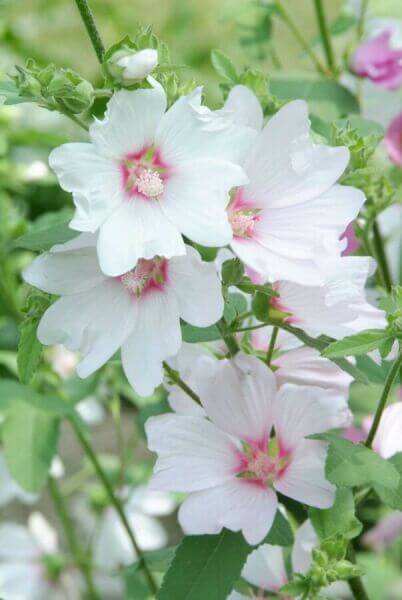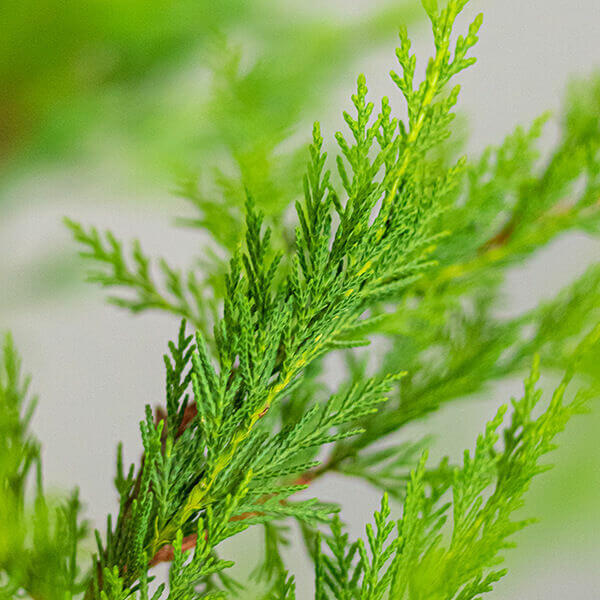Hedge Plants For Natural Landscapes
Best Hedging Plants For Driveways
Improve your garden's attraction with rich hedge ranges such as Yew (Taxus), Thuja, Laurel, Photinia, and Bamboo, celebrated for their structural integrity and ecological advantages.
Yew and Thuja offer evergreen protection and winter strength, while Laurel uses quick development and broad, fragrant leaves.
Photinia includes seasonal appeal with its dynamic red foliage, and Bamboo provides a low-maintenance, serene ambiance.
These hedges enhance air quality, reduce noise, and develop tranquil, private areas.
Correct planting, spacing, and upkeep make sure energetic growth and environmental consistency.
Explore how these lavish varieties can elevate your garden's charm and wellness.
Key Takeaways
Transform Your Garden With Lush Hedge Varieties
- Select Yew for its dense, evergreen development and unrivaled longevity.
- Opt for Laurel for its fast development and broad leaves, guaranteeing quick personal privacy.
- Select Photinia for its vibrant seasonal foliage, which turns a striking dark red.
- Utilize Bamboo for a low-maintenance, winter-hardy hedge with visual appeal.
- Space plants 2-3 per meter and prune regularly for optimum development and health.
Popular Hedge Plants
When transforming a garden with lush hedge varieties, it's vital to think about popular hedge plants such as Yew, Thuja, Laurel, and Photinia due to their distinct attributes and benefits.
Yew (Taxus) is highly respected for its longevity and thick, green growth, making it a prime option for withstanding landscapes.
Thuja is kept in mind for its evergreen foliage and robust winter durability.
Photinia includes seasonal vibrancy with red leaves that darken with time, producing vibrant visual appeal.
Laurel provides rapid development and aromatic, broad leaves, ideal for quick personal privacy.
Additionally, Bamboo is an exceptional choice for ambiance, using a low-maintenance, winter-hardy option that boosts the garden's aesthetic with its sophisticated, swaying canes.
These choices deal with a range of horticultural requirements and choices.
Benefits of Garden Hedges
Garden hedges use a wide range of benefits, making them a valuable addition to any landscape. These natural barriers are cost-effective to implement and offer substantial wind defense, improving air blood circulation and adding to noise decrease. The dense foliage of hedges like Thuja and Beech ensures personal privacy by obstructing visibility, developing a remote and serene environment.
Hedges also play an essential function in microclimate policy, providing a stable environment that cultivates plant growth and lessens temperature level fluctuations. Their elaborate leaf structures filter pollutants, enhancing air quality and adding to a healthier garden environment.
Furthermore, hedges stand out in sound decrease, taking in and deflecting acoustic waves to lower ambient sound levels. This dual performance of providing both acoustic and visual privacy improves the overall serenity and visual appeal of any garden.
Planting and Maintenance Tips
For a successful hedge, careful preparation of the planting location is vital. Guarantee the soil has correct pH and drainage to support strong root development.
Area the plants properly for the picked species. Water the hedge often throughout its preliminary growth phase, adjusting as needed with seasonal changes.
Execute a methodical pest control and disease avoidance strategy, using chemical or natural treatments when necessary. Frequently inspect for aphids, mites, and fungal infections.
Apply mulch to maintain moisture and suppress weeds. Seasonal pruning promotes dense development and air flow, necessary for plant health.
Following these guidelines will help you cultivate a vibrant, well-maintained hedge that improves the appeal of your garden.
Spacing and Trimming Standards
Spacing and Trimming Guidelines
Appropriate spacing and trimming are important for cultivating healthy, aesthetically appealing hedges. Sufficient spacing guarantees each plant gets sufficient nutrients, light, and airflow.
Follow these standards for optimal hedge upkeep:
- Spacing: Position hedge plants 2-3 plants per meter to motivate robust development.
- Pruning Methods: Routine pruning is necessary for keeping wanted hedge height and shape. Cut brand-new growth in summer season and cut down older wood during winter season.
- Seasonal Care: Change cutting schedules and approaches according to seasonal requirements to make sure plant health.
- Hedge Height: Regularly display and trim to preserve the preferred hedge height and accomplish uniform aesthetics.
Complying with these steps will ensure your hedge thrives, improving both the appeal and performance of your garden.
Selecting the Right Hedge
Choosing the Right Hedge
Selecting the suitable hedge includes assessing factors such as mature height, foliage density, and ecological durability. Effective hedge plant selection needs comprehending each species' growth qualities and site-specific adaptability.
For instance, Yew (Taxus) provides excellent durability and dense development, while Thuja is notable for its winter season durability. Additionally, thinking about maintenance requirements is important; fast-growing species like Laurel or Privet need regular cutting, whereas low-maintenance alternatives like Bamboo or Ivy may be more suitable for those seeking very little upkeep.
Environmental aspects such as soil type, light availability, and wetness conditions should likewise guide the selection procedure. This careful method ensures the selected hedges will grow, providing both visual and practical advantages to the garden landscape.
Delivery and Planting Recommendations
To ensure your hedge plants flourish, they need to be delivered by specialized couriers and planted immediately upon arrival.
Follow these essential steps for effective planting:
- Soil Preparation: Improve the soil with raw material to improve drainage and nutrient content.
- Planting Depth: Produce a trench two times the width and equivalent to the depth of the root ball.
- Watering Techniques: Water completely after planting, keeping the soil regularly wet but not saturated.
- Mulching: Use a layer of mulch to maintain wetness and reduce weeds.
Consumer Support and Service
Given the essential function of prompt support in horticultural pursuits, our consumer support group is readily available 6 days a week through telephone, e-mail, and social networks to use skilled guidance and quickly attend to any issues. Their commitment to fast reaction times guarantees client fulfillment by solving questions connected to plant health, optimum planting approaches, and upkeep schedules.

Response Time
Six days a week
Within 48 hours
Within 24 hr
This thorough support group, reinforced by an excellent 9.3/ 10 consumer rating, highlights our dedication to enhancing the gardening experience for every single client.
Regularly Asked Questions
How Long Does It Take for Hedge Plants to Establish?
Hedge plants normally need one to three years to end up being totally developed, with the specific duration varying by species and growing conditions.
Efficient care during this crucial period is important for robust development. Consistent watering, vigilant weed control, and suitable fertilizer application are pivotal in promoting strong root development.
For example, fast-growing species like Laurel may establish faster, while slower-growing varieties such as Yew may take longer. Thorough upkeep speeds up the establishment procedure, resulting in healthy and thick hedges.
What Are the very best Hedge Plants for Personal Privacy?
The concern of the finest hedge plants for personal privacy involves assessing evergreen and deciduous alternatives.
Evergreen hedges like Thuja, Laurel, and Cypress offer year-round protection, ensuring constant privacy.
In contrast, deciduous hedges such as Beech offer seasonal personal privacy, shedding leaves in chillier months.
Key maintenance pointers for personal privacy hedges Browse this site consist of routine cutting, fertilizing in spring, and appropriate spacing-- typically 2 to 3 plants per meter.
Additionally, consistent watering and persistent weed removal are crucial for promoting healthy, dense growth.
Can Hedge Plants Bring In Wildlife to My Garden?
Yes, hedge plants can attract wildlife to your garden by offering essential benefits like shelter, food, and nesting websites, therefore boosting regional biodiversity. For example, yew, holly, and laurel are exceptional for drawing in birds, while ivy supports a variety of bugs.
However, it is essential to keep in mind that there are some drawbacks, such as increased maintenance to handle insects and routine upkeep. Thoroughly picking and keeping hedge varieties can assist balance these drawbacks and advantages, eventually fostering a sustainable and vibrant community in your garden.
Exist Any Flowering Hedge Plants Available?
Yes, there are flowering hedge plants offered that can boost the beauty of your garden.
For instance, Elaeagnus, likewise referred to as Olive Willow, produces fragrant white flowers in the fall, including a touch of sophistication.
Photinia, another popular choice, showcases vibrant red leaves that develop into an abundant green, creating a dynamic visual impact throughout the seasons.
To ensure these plants prosper, it's vital to practice appropriate pruning strategies and seasonal maintenance, such as cutting new development in the summer season and cutting back in the winter.
These measures will help preserve the health and visual appeal of your blooming hedges.
How Do I Avoid Insects in My Hedge Plants?
To avoid bugs in hedge plants, use natural bug control methods and maintain proper hedge care. Introduce advantageous bugs like ladybugs, which victimize harmful pests, to create a balanced community.
Routinely check your hedges for indications of invasion and promptly remove any afflicted parts to avoid the spread. Make sure the health of your hedges by using balanced fertilizers and offering adequate water.
Utilize mulching to maintain soil wetness and correct spacing to decrease plant stress and promote robust growth. These practices collectively assist in reducing bug issues and maintaining a healthy hedge.
Conclusion
In essence, selecting the best hedge ranges such as Yew, Thuja, and Laurel can transform any garden into a peaceful sanctuary. These plants provide year-round plant, improve aesthetic appeal, and offer practical benefits like noise decrease and wind defense.
Correct planting techniques, accurate spacing, consistent watering, and seasonal trimming are essential for optimum growth.
Trusted delivery services and professional customer support ensure a smooth experience from purchase to planting, making it simpler than ever to raise your outdoor space.
Garden hedges offer a wide range of benefits, making them a valuable addition to any landscape. These natural barriers are cost-effective to carry out and supply substantial wind defense, boosting air blood circulation and contributing to sound decrease. The dense foliage of hedges like Thuja and Beech guarantees personal privacy by obstructing visibility, creating a peaceful and secluded environment.

Pruning Techniques: Regular pruning is vital for preserving desired hedge height and shape. Cut brand-new growth in summer season and cut back older wood during winter.